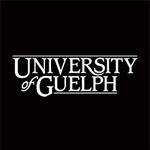My postcard: contemporary perspectives
The featured building in the postcard, Kelvin Hall, is still functioning to this day. Kelvin Hall is partnered with Glasgow Life, the University of Glasgow and the National Library of Scotland. (Kelvin Hall, 1) The hall is used for displays, collections and educational purposes; it even offers sporting events and a health and fitness centre. It has also been used as a concert hall and has provided many variations of entertainment since 1927 when it officially re- opened, after a fire destroyed the first building in 1925. (Kelvin Hall History, 2) Having documentation of significant infrastructure or architectural buildings is valuable in relation to identifying historical events, and is assists in demonstrating the importance of the building at the time (Stevens, 1995). Kelvin Hall is very valuable as it is a historical building and is still used to a great extent.
The tartan demonstrated in the postcard is also still used and remains a valuable piece of Scottish culture to this day. This postcard has multiple kinds of value, as it is not only has potential sentimental value to the consumer and to the Aunt who was meant to recieve it, but it also presents a numerous amount of opportunities to research and expand ones knowledge. These oportunites consist of a better understanding of Scottish culture, types of tartans, the tourism industry in Scotland, the significance of Kelvin Hall, and even provides written primary documentation of life in the 20th century. Although postcards are meant to only be transitory and eventually disposed of, the ephemera that have been protected, expose a unique look into the everyday lives of those who lived in that time period. (Russel, 2014)


